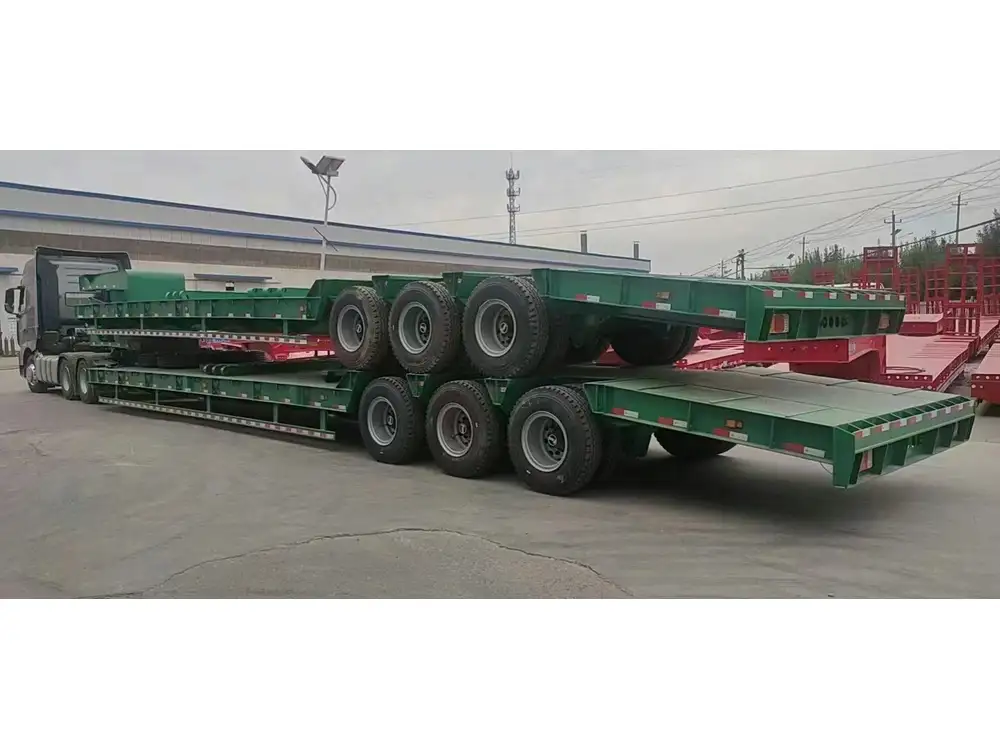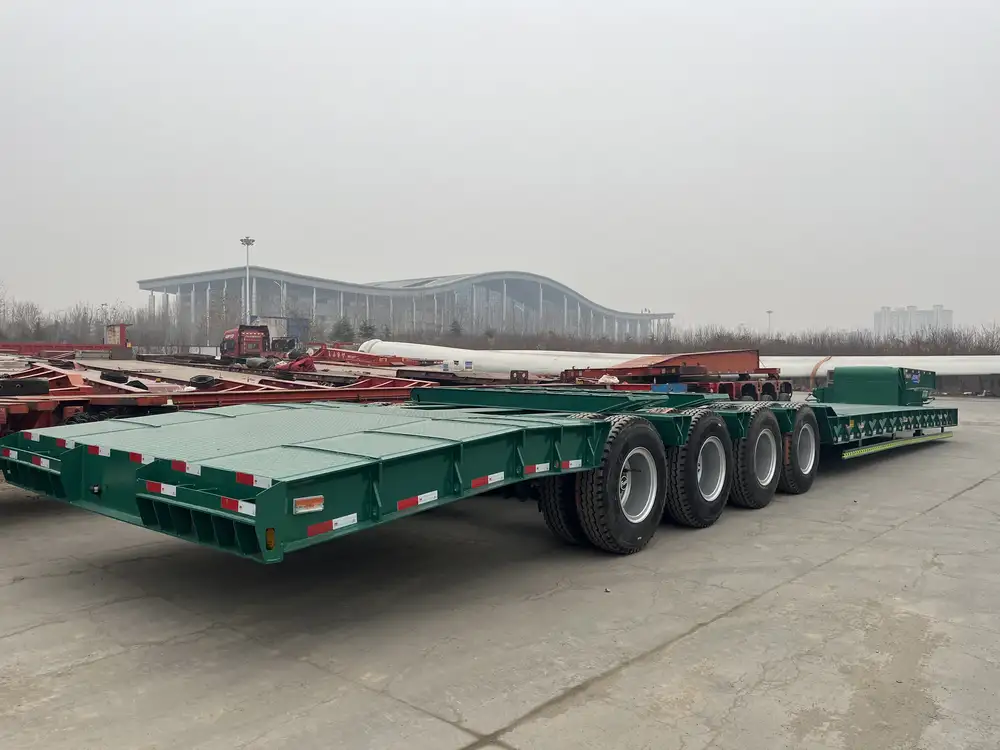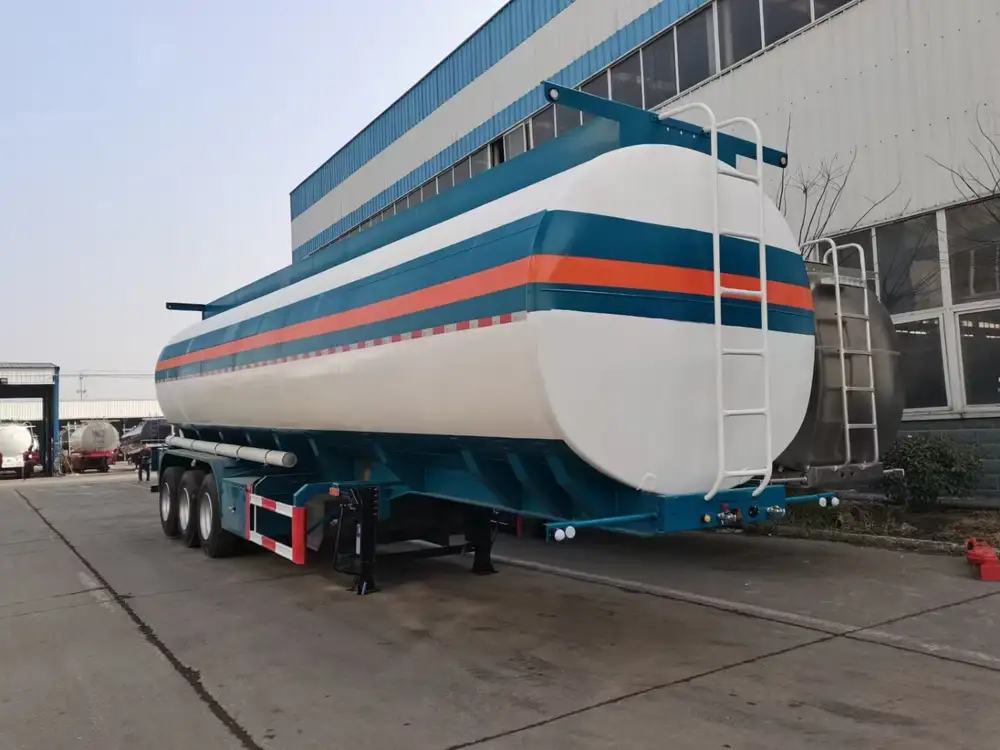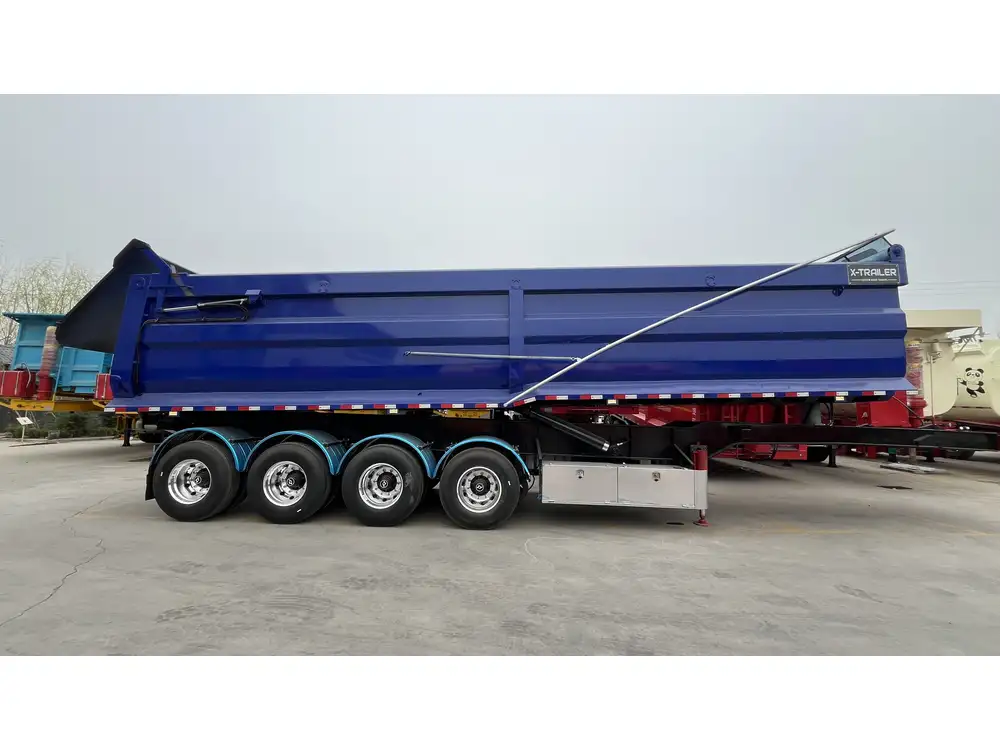Understanding the intricacies of a semi trailer’s air brake system is crucial for ensuring safety, efficiency, and longevity in your fleet operations. At CarMax Vehicle, we specialize in designing and manufacturing semi trailers equipped with advanced air brake systems. This guide delves deep into the semi trailer air brake diagram, offering a detailed exploration of its components, functionality, and maintenance, aimed at both industry professionals and enthusiasts seeking comprehensive knowledge.
Table of Contents
- Introduction to Semi Trailer Air Brake Systems
- Key Components of the Air Brake System
- Compressor
- Reservoir Tanks
- Brake Chambers
- Slack Adjusters
- Brake Lines and Valves
- Understanding the Semi Trailer Air Brake Diagram
- System Layout
- Air Flow Path
- Functionality and Operation
- Application of Brakes
- Release Mechanism
- Parking Brake System
- Maintenance and Troubleshooting
- Regular Inspection Procedures
- Common Issues and Solutions
- Importance of Proper Maintenance
- Safety Measures and Best Practices
- Training for Operators
- Safety Checks Before Operation
- Emergency Protocols
- Innovations in Air Brake Technology
- Enhanced Brake Control Systems
- Integration with Modern Telematics
- Future Trends in Air Brake Systems
- Why Choose CarMax Trailer for Your Air Brake Needs
- Conclusion
- Frequently Asked Questions
Introduction to Semi Trailer Air Brake Systems
Air brake systems are the cornerstone of safety in semi trailers, providing reliable stopping power essential for heavy-duty transportation. Unlike hydraulic systems, air brakes utilize compressed air to apply pressure to the brake pads, ensuring consistent performance even under extreme load conditions. A comprehensive understanding of the air brake diagram is vital for diagnosing issues, performing maintenance, and optimizing brake performance.

Key Components of the Air Brake System
To fully grasp the semi trailer air brake diagram, it’s essential to familiarize yourself with its primary components. Each plays a pivotal role in the system’s overall functionality.
Compressor
The compressor is the heart of the air brake system, responsible for compressing atmospheric air and supplying it to the system. It ensures a steady flow of air, maintaining optimal pressure levels crucial for brake operation.
Reservoir Tanks
Reservoir tanks store compressed air, acting as a buffer to maintain consistent pressure within the system. They are strategically placed to balance the trailer’s weight distribution and ensure efficient air storage.

Brake Chambers
Brake chambers convert compressed air pressure into mechanical force. Located at each wheel, they actuate the brake pads, enabling the semi trailer to decelerate or come to a complete stop when needed.
Slack Adjusters
Slack adjusters are mechanical devices that translate the movement from the brake chamber into the necessary force to engage the brake shoes. They ensure minimal play in the brake lining, maintaining responsiveness and reducing wear.
Brake Lines and Valves
Brake lines transport compressed air from the compressor and reservoir tanks to various components. Valves regulate the airflow, controlling brake application and release, and ensuring smooth operation across the system.

Understanding the Semi Trailer Air Brake Diagram
A semi trailer air brake diagram provides a visual representation of the entire braking system, illustrating how each component interconnects and functions cohesively.
System Layout
The diagram typically showcases the main components—compressor, reservoir tanks, brake chambers, slack adjusters, and brake lines—positioned in relation to each other. It highlights the flow of air from the compressor to the brakes, emphasizing the sequential operation during braking.
Air Flow Path
Understanding the air flow path is crucial. The compressed air travels from the compressor to the reservoir tanks, then through brake lines to the brake chambers at each wheel. Valves manage this flow, directing air to apply or release the brakes as required.

Functionality and Operation
The operation of a semi trailer air brake system is a finely tuned process that ensures effective braking under various conditions.
Application of Brakes
When the driver applies the brake pedal, it triggers a valve that releases compressed air from the reservoir tanks into the brake chambers. This increased pressure forces the brake shoes against the drums, creating the friction needed to slow down or stop the trailer.
Release Mechanism
Releasing the brake pedal allows air to escape from the brake chambers, disengaging the brake shoes from the drums. This release ensures that the brakes are not dragging, reducing wear and preventing overheating.

Parking Brake System
The parking brake is an essential feature that maintains the trailer’s position when parked. It operates independently of the main brake system, providing additional security by locking the brake shoes in place, preventing unintended movement.
Maintenance and Troubleshooting
Regular maintenance and timely troubleshooting are vital for the longevity and reliability of the air brake system.
Regular Inspection Procedures
Routine inspections should include checking air pressure levels, inspecting brake lines for leaks or damage, ensuring reservoir tanks are free from contaminants, and verifying the functionality of valves and compressors.

Common Issues and Solutions
- Air Leaks: Often caused by damaged brake lines or faulty fittings. Identifying and repairing leaks promptly prevents pressure loss and brake failure.
- Worn Brake Shoes: Regularly monitor brake shoe wear and replace them as necessary to maintain effective braking performance.
- Compressor Failures: Conduct periodic checks on the compressor’s operation, listening for unusual noises or performance drops, and service or replace as needed.
Importance of Proper Maintenance
Neglecting maintenance can lead to system failures, increased repair costs, and, most critically, compromised safety. Implementing a structured maintenance schedule ensures the air brake system remains in optimal condition.
Safety Measures and Best Practices
Adhering to safety protocols and best practices enhances the reliability of the air brake system and ensures the safety of operators and cargo.

Training for Operators
Comprehensive training programs for drivers and maintenance personnel are essential. Understanding the air brake diagram and system operation empowers them to perform effective maintenance and respond appropriately to issues.
Safety Checks Before Operation
Before each trip, conduct thorough safety checks, including verifying air pressure levels, inspecting brake components, and ensuring there are no visible signs of wear or damage.
Emergency Protocols
Establish clear emergency procedures for brake failures or system malfunctions. Quick and informed responses can prevent accidents and ensure the safety of all parties involved.

Innovations in Air Brake Technology
The air brake system continues to evolve with technological advancements, enhancing performance and safety.
Enhanced Brake Control Systems
Modern brake control systems offer improved modulation and responsiveness, allowing for more precise braking and better control under varying load conditions.
Integration with Modern Telematics
Integration with telematics systems provides real-time monitoring of brake performance, enabling proactive maintenance and immediate alerts for any anomalies.

Future Trends in Air Brake Systems
Future developments are likely to focus on increasing efficiency, reducing weight, and incorporating smart technologies that further enhance safety and performance.
Why Choose CarMax Trailer for Your Air Brake Needs
At CarMax Trailer, we prioritize quality and innovation in every air brake system we design and manufacture. Our semi trailers are equipped with state-of-the-art air brake diagrams that ensure optimal performance and reliability. Partnering with us means benefiting from:
- Expert Engineering: Our team of experienced engineers meticulously designs each component for maximum efficiency and durability.
- Quality Assurance: Rigorous testing protocols ensure that our air brake systems meet the highest industry standards.
- Customer-Centric Solutions: We tailor our products to meet the specific needs of our clients, providing customized solutions that enhance operational efficiency.
Conclusion
A thorough understanding of the semi trailer air brake diagram is indispensable for maintaining safety and efficiency in heavy-duty transportation. At CarMax Vehicle, our commitment to excellence ensures that our air brake systems deliver reliable performance, backed by comprehensive support and expertise. Whether you are a fleet manager, maintenance technician, or a trucking enthusiast, leveraging this knowledge can significantly enhance your operational effectiveness and safety standards.

Frequently Asked Questions
1. What is the primary function of the compressor in a semi trailer air brake system?
The compressor generates and supplies the necessary compressed air to the brake system, maintaining adequate pressure levels required for effective brake operation.
2. How often should the air brake system be inspected for optimal performance?
Regular inspections should be conducted before each trip, with comprehensive maintenance performed according to the manufacturer’s guidelines, typically every 10,000 miles or as recommended by CarMax Trailer.
3. What are the signs of a failing air brake system?
Indicators include prolonged brake application times, reduced braking efficiency, unusual noises from the brake components, and visible air leaks in the brake lines.
4. Can I perform air brake maintenance myself, or should I hire a professional?
While basic maintenance tasks can be performed by knowledgeable operators, it is recommended to have a certified professional handle comprehensive inspections and repairs to ensure system integrity and safety.
5. How do modern telematics systems enhance air brake system performance?
Telematics systems provide real-time monitoring and data analysis of brake performance, enabling proactive maintenance, immediate detection of issues, and improved overall system management.



